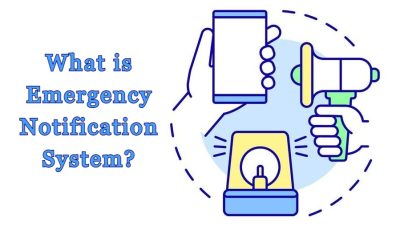Beginning with wireless internet asheville nc, the narrative unfolds in a compelling and distinctive manner, drawing readers into a story that promises to be both engaging and uniquely memorable.
In today’s fast-paced digital world, having reliable wireless internet is essential, especially in scenic locales like Asheville, North Carolina. This vibrant city not only offers breathtaking views and a rich cultural scene but also boasts an array of internet providers that cater to the diverse needs of its residents and visitors. Understanding the options available for wireless internet in Asheville can enhance your experience, whether you’re working remotely, streaming your favorite shows, or connecting with loved ones.
In today’s fast-paced world, where technology continues to evolve at an unprecedented rate, the way we communicate, work, and live has transformed dramatically. The advent of the internet and digital devices has made information more accessible than ever, fostering a culture of connectivity and instant gratification. In this article, we will explore the various facets of modern communication, including its evolution, current trends, and the challenges it presents.### The Evolution of CommunicationThe history of communication is as old as humanity itself.
From the early days of cave paintings and smoke signals to the invention of the telephone and the internet, the methods through which we convey ideas and information have undergone significant changes. #### Early Forms of CommunicationIn prehistoric times, our ancestors relied on rudimentary forms of communication. They used symbols and sounds to convey messages, which gradually evolved into spoken language.
The invention of writing around 3200 BCE in Mesopotamia marked a pivotal moment, allowing humans to record information and share it over distances and generations.#### The Printing RevolutionFast forward to the 15th century, the invention of the printing press by Johannes Gutenberg revolutionized the dissemination of information. Books became more accessible, leading to increased literacy rates and the spread of knowledge.
This era laid the foundation for the modern communication landscape, paving the way for newspapers and mass media.#### The Digital AgeThe 20th century saw the emergence of electronic communication, beginning with the telegraph and telephone. However, it was the introduction of the internet in the 1990s that truly transformed the way we communicate. Email, instant messaging, and social media platforms like Facebook and Twitter have made it possible for people to connect across the globe in real time.### Current Trends in CommunicationAs we navigate through the 21st century, several trends in communication have emerged, significantly influencing how we interact.#### Social Media DominanceSocial media platforms have become the primary means of communication for many individuals.
They not only facilitate personal interactions but also serve as vital tools for businesses and organizations to engage with their audiences. The ability to share content, receive feedback, and create communities has made social media an indispensable component of modern communication.#### Video CommunicationThe rise of video conferencing tools like Zoom and Microsoft Teams has further changed the landscape of communication, particularly in the wake of the COVID-19 pandemic.
Remote work and virtual meetings have become the norm, allowing teams to collaborate effectively regardless of their physical locations. Video communication adds a personal touch, enabling non-verbal cues to enhance understanding.#### Instant MessagingInstant messaging applications such as WhatsApp and Telegram have transformed how we communicate in everyday life. These platforms offer fast, convenient ways to exchange messages, share multimedia, and even conduct business conversations.

The use of emojis and GIFs has further enriched our digital conversations, allowing for a more expressive form of communication.### Challenges in Modern CommunicationDespite the advancements in communication technologies, several challenges persist, impacting how we interact with one another.#### Information OverloadIn an age where information is abundant, the sheer volume of data can be overwhelming. Individuals often struggle to filter relevant information from the noise, leading to challenges in decision-making and communication clarity.
The phenomenon of “information overload” can create stress and hinder effective communication.#### MiscommunicationWith the rise of digital communication, the potential for miscommunication has also increased. Tone and intent can be easily lost in text-based messages, leading to misunderstandings. Cultural differences further complicate communication, as expressions and idioms may not translate well across different languages and contexts.#### Privacy ConcernsAs we share more of our lives online, concerns about privacy and data security have become paramount.

The potential for personal information to be misused or exposed creates a barrier to open communication. Individuals often feel hesitant to express themselves fully due to worries about surveillance and data breaches.### The Future of CommunicationLooking ahead, the future of communication seems poised for even more dramatic changes. Several key trends are likely to shape how we interact in the coming years.#### Artificial Intelligence and CommunicationArtificial intelligence (AI) is already beginning to transform communication.
From chatbots providing customer service to AI-driven tools that enhance language translation, technology is making it easier to communicate across barriers. As AI continues to evolve, we can expect more sophisticated applications that will further streamline communication processes.#### Virtual and Augmented RealityVirtual reality (VR) and augmented reality (AR) are on the horizon as emerging tools for communication. These technologies have the potential to create immersive experiences, enabling users to interact in new and innovative ways.
Imagine attending a virtual conference where you can engage with speakers and attendees as if you were physically present. #### Emphasis on Mental HealthAs awareness of mental health grows, there will likely be a greater emphasis on empathetic communication. People will increasingly prioritize emotional intelligence in their interactions, recognizing the importance of understanding others’ feelings and perspectives. This shift could lead to more compassionate and effective communication practices in both personal and professional settings.### ConclusionIn conclusion, communication has come a long way from its primitive origins, evolving into a complex web of interactions facilitated by technology.
While modern communication offers unprecedented opportunities for connection and collaboration, it also presents challenges that we must navigate carefully. As we look to the future, staying adaptable and aware of the evolving communication landscape will be crucial. Embracing new technologies while prioritizing empathy and understanding will enable us to foster meaningful relationships, both online and offline. The journey of communication is far from over, and as we continue to innovate, the possibilities for connection are limitless.
Essential Questionnaire
What are the best wireless internet providers in Asheville?
Some of the top providers include AT&T, Spectrum, and Xfinity, each offering various plans and speeds.
Is wireless internet available in rural areas of Asheville?
Yes, several providers extend their services to rural areas, though speed and availability may vary.
Can I get customer support for wireless internet in Asheville?
Yes, most providers offer customer support via phone, online chat, or in-person at local offices.
How do I choose the right plan for my needs?
Consider factors like speed requirements, data usage, and budget when selecting a plan.
Are there any contracts or fees associated with wireless internet?

Many providers have contracts, but some offer no-contract options. Be sure to check for installation or equipment fees as well.











